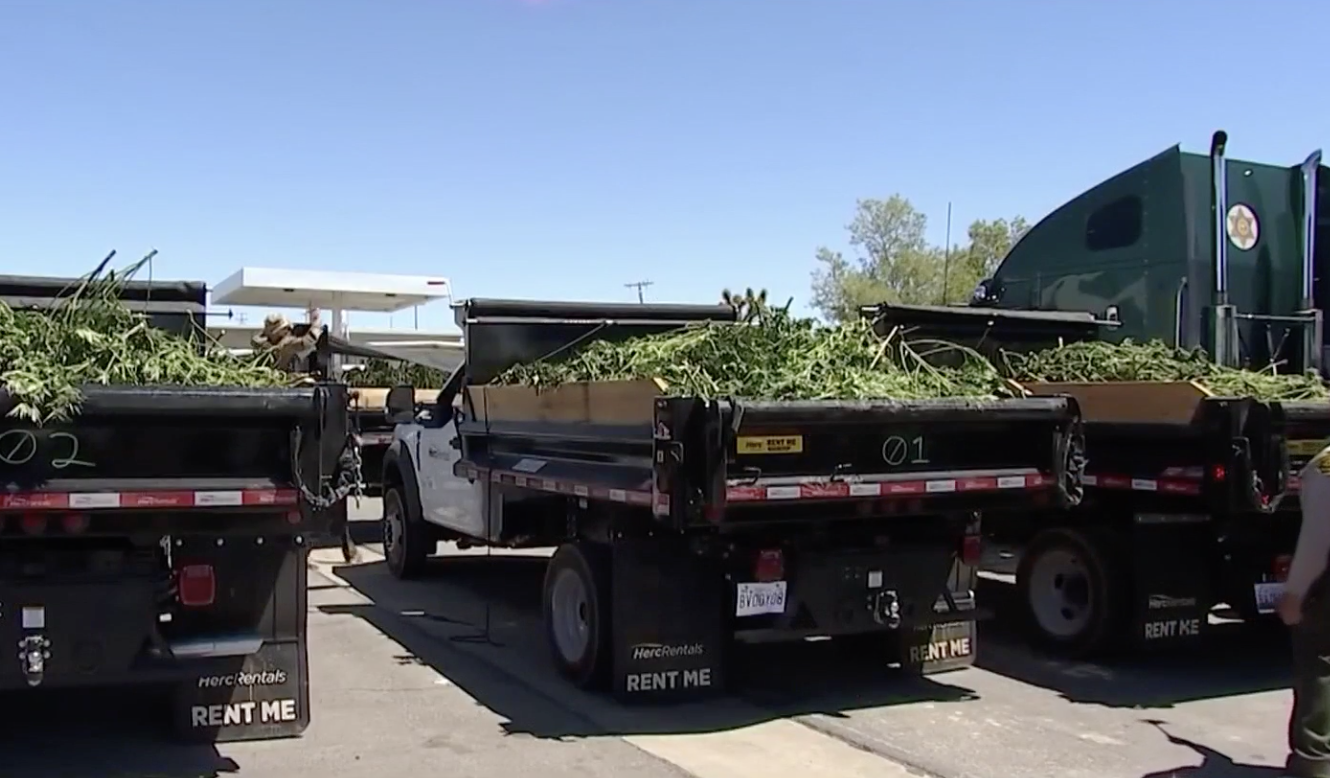Illegal pot grows were already a problem in the High Desert, but during the pandemic, the number increased, and now officials say with scarce water resources in Southern California, it’s a drought problem too.
The NBC4 I-Team has been following the efforts to eradicate illegal marijuana operations in the high desert region of Southern California. On May 17, the Los Angeles County Sheriff’s Department announced a new operation targeting those operations.
The problem exploded during the pandemic with illegal marijuana grow operations quickly multiplying in High Desert communities. Within the past year alone, more than 2,000 have been documented in Los Angeles and San Bernardino Counties. Also documented is the devastating impact on the environment, from the dangerous chemicals used — and left behind — to the staggering amount of water needed for these operations.
“The average marijuana plant requires a minimum of 3 gallons of water per plant, per day,” LA County Sheriff Alex Villanueva said. “Just the 2021 numbers alone amount to 150 million gallons of water used to bring that crop to harvest. That’s just enormous.”
The I-Team has witnessed wells being drilled in the desert, overweight trucks hauling water and some growers even tapping in to municipal water systems.
“I want to make it perfeclty clear to everybody, this is not just about marijuana,” said Lancaster vice mayor Marvin Crist. “This is mostly about water. They are stealing water that belongs to this valley.”
Tom Lackey, who represents California’s 36th assembly district, echoed those concerns.
“To any of those who are engaged in illegal grows I want you to know there’s a collective effort, and we’re coming after you,” Lackey said. “You come after a very sacred thing: our community. You come after our desert, stealing our water. You’re poisoning our land, and enough is enough.”
Sheriff Villanueva said the operation that launched in the Lancaster area May 17 is just the beginning. He described what he witnessed on the initial raids.
“The piles of trash were as far as the eye could see. Six feet high, just mounds of trash everywhere,” said Villanueva.
But he also noted progress is being made. Villanueva said there are now 350 illegal grow sites in the Antelope Valley. That’s down from 750 last year. In San Bernardino County, what’s known as “Operation Hammerstrike” is also making progress. The number of illegal operations is down 40%, from nearly 1,300 to 725 now.
But illegal cultivation is still only a misdemeanor. Villanueva said felony enhancements can be added, and he urged LA county’s district attorney to do more.
“Enhancements for using dangerous chemicals in the ground, we can tack on,” Villanueva said. “George Gascón, are you listening? The community is suffering and we need you to do your part and do the prosecution.”
Civil penalties appear to be helping. Supervisors Kathryn Barger in LA County and Dawn Rowe in San Bernardino County are credited with working to get steep fines and abatement measures in place to keep illegal grow operations from returning once they’ve been raided.


